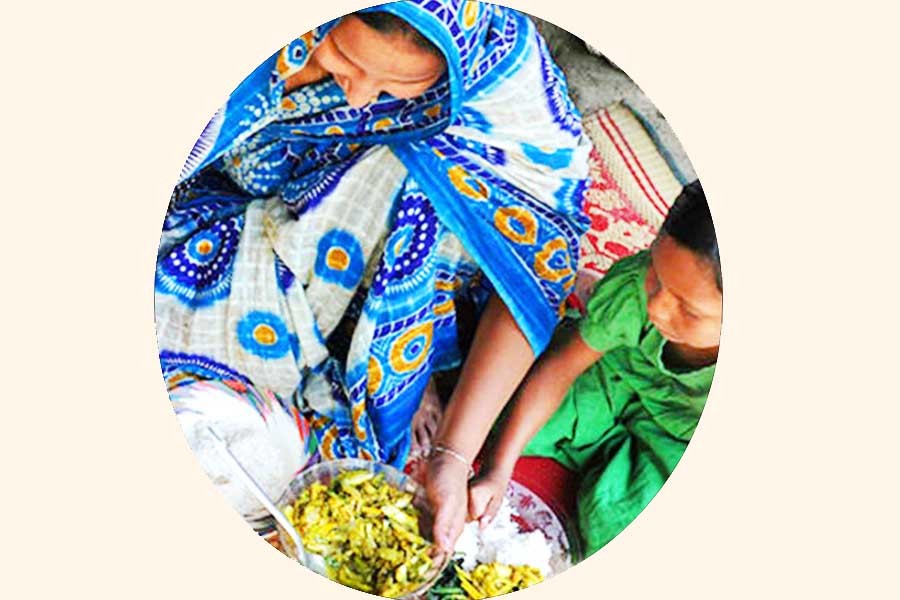The ambivalence about Bangladesh's one notch slip, from 75th to 76th, and still its attaining the moderate level of hunger from the serious for the first time in history are explained by inclusion of more countries in the list in 2021 than those of 2020. In 2020, a total of 107 countries were covered by the Concern Worldwide, an Irish aid agency and its German Partner Welthungerhilfe and in 2021, the number of qualifying countries stands at 116. So a slip by one point did not stand in the country's achieving the moderate status in the Global Hunger Index (GHI).
In fact, Bangladesh has seen an impressive improvement in mitigating hunger and its attending ills since 2012. Here the lower the score is, the greater the success in eliminating hunger. Out of 100 points, 0 is the lowest possible score and it remains a utopia, although China, Brazil and Kuwait have been credited with less than 5.0 points. No wonder, these countries top the list so far as GHI achievements are concerned. Calculated on four indicators ---undernourishment, child wasting, child stunting and child mortality, the GHI score is arrived at. Bangladesh's score dropped, rather in an impressive turnaround, to 19.1 points in 2021 from 28.6 points, considered serious, in 2012. In 2000, child stunting --- under five children with lower height compared to their age --- was as high as 51.1. This has now come down to 28 per cent. Quite a big gain no doubt, but there are miles to go before those 28 per cent children can be better fed and helped grow to their proper height.
Had the pandemic not struck, Bangladesh would have given even a better performance in the fight against hunger and malnourishment. Still it has fared better than India and Pakistan.
However, a study titled "Extreme Poverty: the Challenges of Inclusion in Bangladesh" which was conducted jointly by the Bangladesh institute of Development Study (BIDS) and the Bath University, the United Kingdom, on the basis of 2019 data ---that is before the pandemic --- found that multidimensional poverty in Bangladesh was high. Measured under the multidimensional poverty index (MPI), 25.87 per cent of the total population was found to be poor. On the other hand, extreme poverty, as estimated by the Bangladesh Bureau of Statistics (BBS) based on household expenditure and income survey (HEIS), 2016 was put at 12.9 per cent and the upper level poverty at 24.30 per cent.
Post-pandemic study, particularly on people who have lost jobs in the informal sector during the lockdown, may find a reverse trend in the reduction of poverty. At least the results of one study conducted by the World Bank published in April this year confirm that poverty has risen by 7.0 percentage points to 30 per cent. A survey by the South Asian Network on economic Modeling (SANEM) found that the upper poverty rate in the country doubled to 42 per cent in December 2020 from 21.6 per cent in 2018. Responsible for this, according to SANEM, was the economic stagnation due to the Covid-19 restrictions.
Surveys like these may arrive at different results but about one thing there is no doubt that people at the lower echelon have been hard hit by the economic slowdown on account of the pandemic. It has its direct bearing on the family expenditure. In time of food crisis caused by loss of or reduced income, people are compelled to cut on their food requirements. In a situation like this children and women suffer the most. The country's economy has started to recover slowly but it is yet to have a significant turnaround, let alone become robust, to create avenues for absorption of all who turned unemployed and others who have by now joined the queue.
By the time the economy starts running full steam, if it is not disrupted by yet another surge in the Covid-19 or any other reversal, many families may have ended up encountering far worse days and falling in the poverty trap. Their health and wellness will be seriously compromised in the process. The gain in GHI may as well have to be surrendered to the lingering post-pandemic recession.
Hunger, after all, is a slow process that takes its toll depending on a host of factors. Right now, the market volatility has become quite pernicious. The poor, the extreme poor and even the middle class people have to do away with many of their basic needs essential for maintaining good health. Unsurprisingly, the rich have become richer not only in the free market-driven economies of the West but also in countries like Bangladesh. Distribution of wealth and more importantly opportunities has been archaic and the poor sections are paying a heavy price even in time of the pandemic.
Yet defying the economic theories, Bangladesh has improved its GHI to earn the status of a moderate level of hunger from the serious. This is a spectacular achievement by all means. Now the need is to sustain it in the post-pandemic frenzy of economic recovery where the richer sections are on the prowl to make the most of the situation. Businesspeople have received fat stimulus packages. If there were distributive justice, the poor could as well have received enough social benefits for maintaining their living standard which is still far from the ideal.


